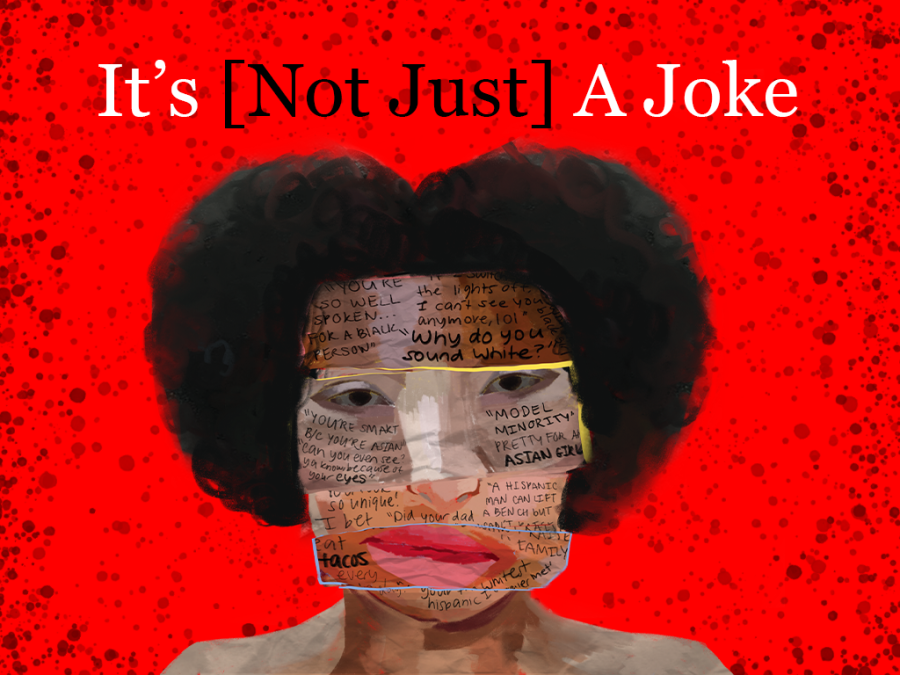It’s [Not Just] A Joke
Casual racism occurs in comments we read online and at the Thanksgiving dinner table and has become normalized in our daily conversations.
Racism, regardless of intention, still hurts.
December 12, 2022
On her freshman year trip, Hispanic senior Jade Silva and her peers walked past a taco truck. Her peers laughed, pointed to the taco truck nearby, and then pointed to Jade.
It was small, ignorant, disregardable—but the hint of racism made her uncomfortable. She laughed along with her peers, but her cheeks felt hot as she walked away from the taco truck.
Jade was unsure whether or not she could consider this a racist remark; after all, she thought the comment was meant as a joke, so they could not have meant anything serious, right?
Schools attempt to educate students on the meaning of racism, hoping to inform and bring attention to its ugly history and unspoken implications. These discussions often discount the subtle ways racism can harm others.
While obvious, blatant racism is curtailed, toned-down racist statements can fly under the radar. Often, this manifests in underhanded jokes that draw upon stereotypes, deriving from privilege and ignorance, often unintentionally.
This phenomenon is called casual racism, where racism creeps into daily conversations through reflexive prejudice and stereotypes, compared to overt racism.
Casual racism, which occurs predominantly in white communities, can be so normalized that people aren’t conscious of the harm caused by their words.
A lack of diversity creates an environment where it’s easy not to think before speaking.
“In my fourth-grade graduation, you would see a bunch of white faces and then just me, a Mexican girl. People would start comparing their skin tones to mine, and I felt uncomfortable and singled out. I have not liked my skin tone until recently,” Jade said.
Throughout Jade’s experiences in high school, she has faced microaggressions—sometimes, it would be about the food she brought to school, other times about her family. She could not differentiate between what was intentional and what wasn’t. Casual racism occurs in comments we read online and at the Thanksgiving dinner table and has become normalized in our daily conversations.
Still, it affected her. Instances of casual racism don’t need to be intentionally offensive–they can appear like harmless gestures or compliments. For example, the “model minority” myth is associated with Asians being more successful and intelligent because of their race.
“Asians achieve just enough success to be tolerated, but the moment they are too successful, it gets threatening,” said Ursula Chan, DEI Coordinator.
Assuming these traits, Asian people have been uplifted by cultural stereotypes for many generations. Some people might clarify this as a “positive” stereotype, but it only results in more pressure placed upon Asians.
Casual racism has become so normalized on school campuses that students have been conditioned to accept it, disregard it and move on. “Students on an educational level need to be informed about what casual racism is as well as microaggressions. Students might have said something unintentionally offensive and thought it was a joke instead.
As a school, we could be more explicit in identifying what microaggressions are and how we can address them,” says Chan. No matter how casual racism is formed, whether as a joke, a compliment, or an insult, schools and teachers need to learn to acknowledge and bring awareness to this contentious subject.


































